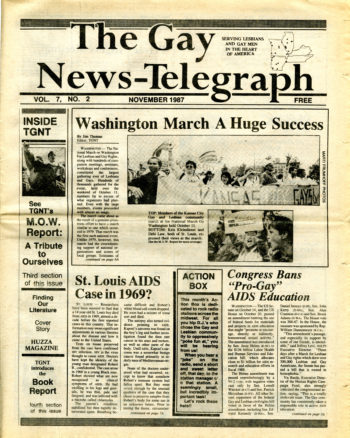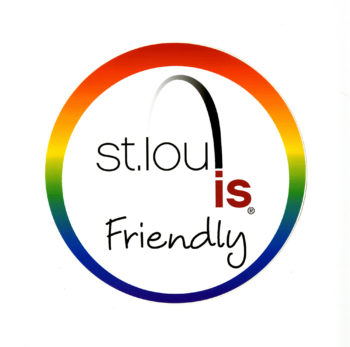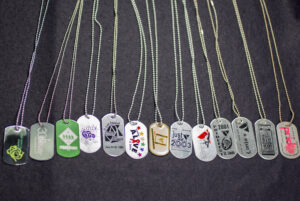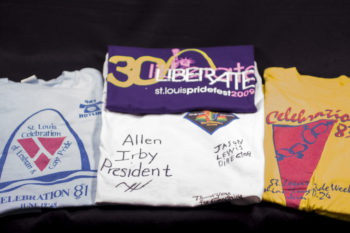
National Coming Out Day and the LGBTQ+ Research Collection
Yesterday was National Coming Out Day, and to celebrate, we are highlighting one of our most extensive LGBTQ+ collections, the St. Louis LGBTQ+ Research Collection.

The History of National Coming Out Day
National Coming Out Day was established in 1988 to encourage LGBTQ+ populations to come out to their friends and families. The day was meant to fight homophobia by positively celebrating LGBTQ+ identities, which were (and unfortunately still are) so often stigmatized. LGBTQ+ activists chose the date of October 11th because it was the anniversary of the 1987 National March on Washington for Gay and Lesbian Rights. The newspaper clipping from the local Midwestern publication featured above reports on the National March with photographs of participants from both the Kansas City and St. Louis areas.

Local History in the Archives
The Washington University Libraries’ LGBTQ+ Research Collection has an extensive collection of materials that document local and national LGBTQ+ history from 1967 to the present. This collection includes, among other things, periodicals from the Midwest area (such as the one featured at the top of this post), national LGBTQ+ periodicals, conference and task force publications, documents from various rights groups and LGBTQ+ businesses, and pieces of material culture, such as the gay pride dog tags and lesbian trivia game included in this post.

The St. Louis LGBT History and Mapping Projects
Much of the material in the LGBTQ+ Research Collection comes from the St. Louis LGBT History Project, which was founded in 2007 by Steven Brawley and aims to document and preserve lesbian, gay, bisexual, transgender, queer, and associated communities’ local history.

Elements of this collection were used to create the Mapping LGBTQ St. Louis, a digital interactive map that explores how the region’s lesbian, gay, bisexual, transgender, and queer communities have changed from the end of World War II through 1992 when St. Louis city passed its first gay and lesbian inclusive civil rights ordinance. You can read more about the project in this previous blog post and more about how it was researched on the Mapping LGBTQ St. Louis Collection page.


